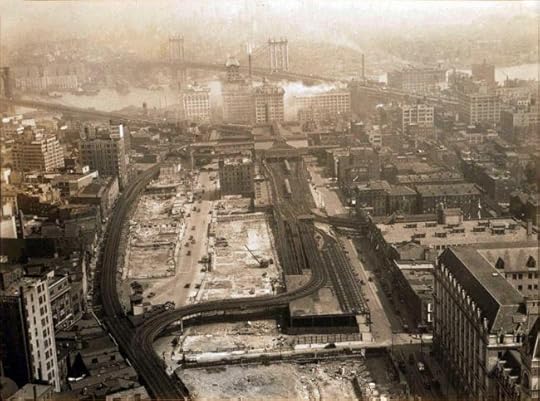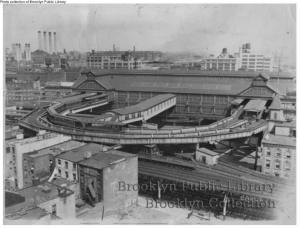Break for Edit
Sorry I haven’t posted lately folks, I am in an editing stage right now where I have to make final decisions on the book before it goes to the publisher. At that point the editing continues, but just technical editing. No new ideas will be introduced by then. So, this is my last chance to introduce anything into the book.
In the meantime, here is a photo of the Sands Street Station in Brooklyn during the White Hand Gang’s era. It was built around 1908 and torn down in 1944. As you can see, it had many tentacles of tracks coming out from it as it was literally the central station for all Brooklyn travel.

The actual station house is just above the center of the photo, but you can see Fulton Street to the left underneath the elevated track and the Manhattan Bridge at the top of the photo.
Since it was connected to the approach of the Brooklyn Bridge, it allowed Brooklynites to travel to Manhattan by train or trolley and Manhattanites to make a quick stop in Brooklyn, if need be. The station was three levels high and had adjoining tracks on each level that connected to the Fulton Street Elevated track or the Myrtle Avenue Elevated. Before doing so, however, there was a loop that the trains had to go round in order to double back to Brooklyn instead of going over the bridge. From there, you could travel all the way down to Coney Island or various places in Queens or to Prospect Park, if you like.
The White Hand Gang’s newest members, Richie Lonergan and his crew (Petey Behan, Abe Harms, Matty Martin and Timothy Quilty), all around ages 14 and 15, previously pick-pocketed and cut-pursed at the station during the day. Since there were so many travelers and not a huge police presence, the Sands Street Stations was a popular place for muggers.
This humungous, three-level station with elevated tracks running through the tenement neighborhoods and along the waterfront was literally a few blocks away from 25 Bridge Street, a longshoremen’s saloon which was the White Hand Gang’s headquarters.
Eventually, the station and the elevated tracks were torn down and Cadman Plaza was built in this area in a very similar shape.

The Loop at the Sands Street Station. I don’t know about you, but that doesn’t seem very stable to me.
Like the Manhattan Bridge (built in 1909), it was not around when the area was called Irishtown, but became a permanent fixture when the Brooklyn waterfront became the industrial and manufacturing center of the United States in the busiest port harbor in the world.
Hope you all are enjoying your weekend and I’ll post something up as soon as I can.
Thanks,
Eamon





